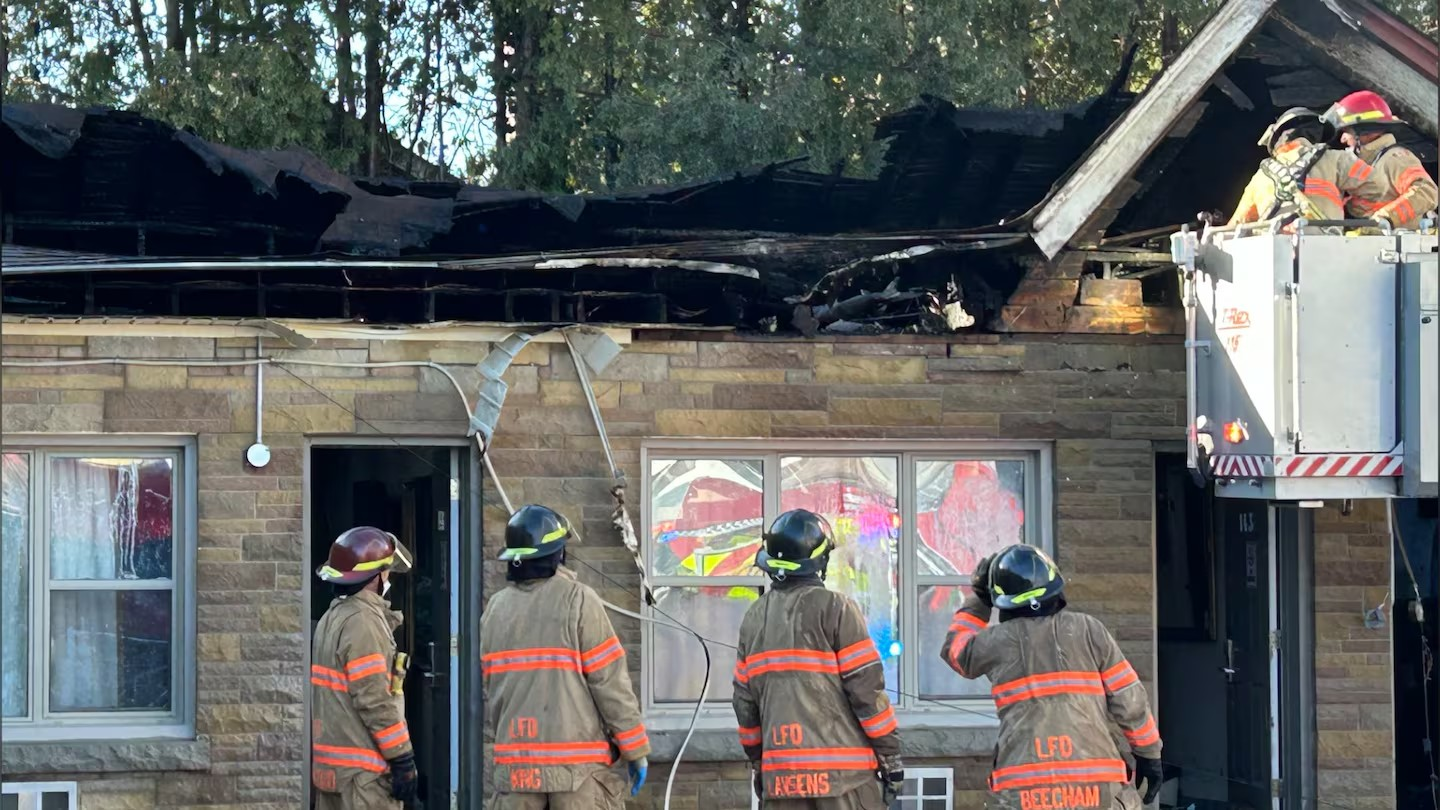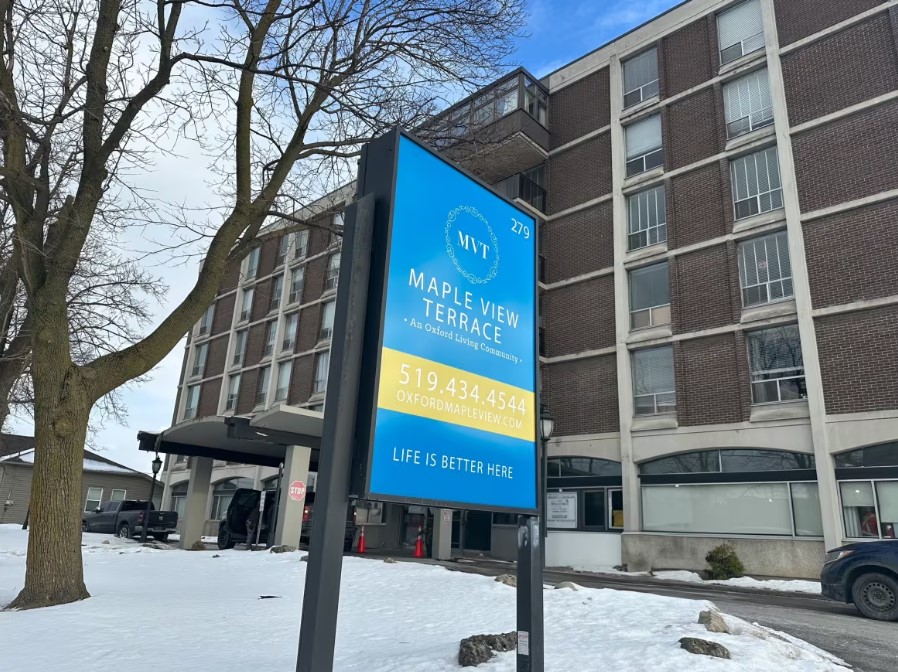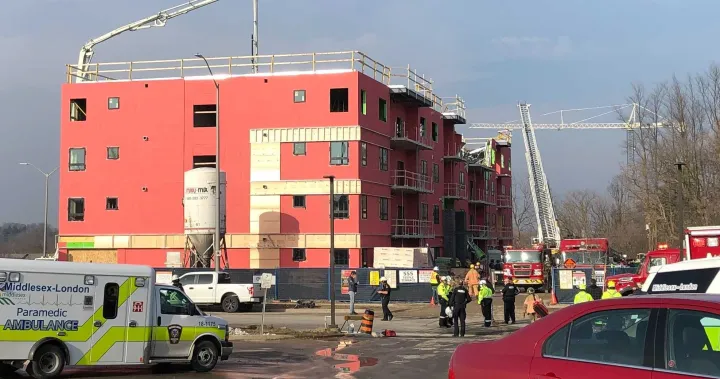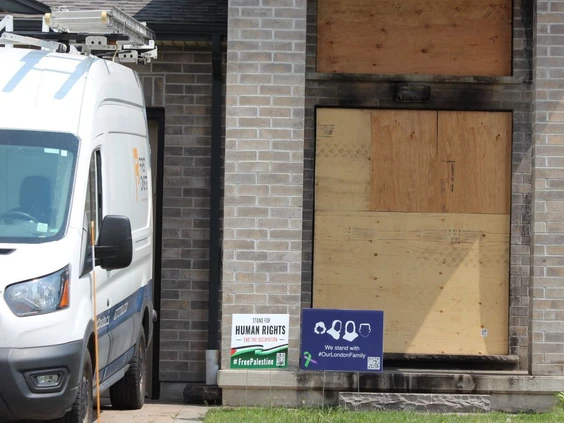CPKC train to ignite before rolling through downtown London, Ont.: TSB
Alessio Donnini CBC News
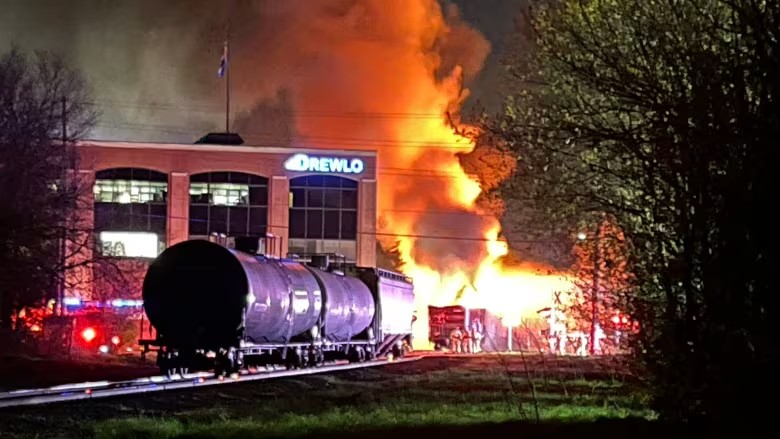
The Canadian Pacific Kansas City train eventually halted at Pall Mall Street and Waterloo Street in central London, Ont., where it took 28 firefighters to knock down the blaze on April 21. (Sean Davidson/CBC)
Sparks caused by a locomotive’s exhaust system likely started the sequence of events that ended in flaming train cars barrelling through downtown London, Ont., in late April, the Transportation Safety Board (TSB) of Canada says.
Once the flames took hold, they were likely spread to other train cars because of the airflow caused by the train’s movement, the regulatory body said in a written statement on Wednesday.
The train and railway are owned and operated by Canadian Pacific Kansas City (CPKC).
“In light of the above information, there is nothing that would indicate any further investigation beyond a Class 5 investigation would produce any systemic safety benefits,” the statement read, defining a Class 5 investigation as not comprehensive and lacking a full report.
In an email to CBC, the investigative agency wouldn’t say whether train crews called 911 when they realized the train was on fire. The TSB would only say the train crew “made all appropriate notifications in accordance with CPKC’s emergency response protocols” and “any and all relevant information obtained under the Canadian Transportation Accident Investigation and Safety Board Act is confidential. As such we will not be sharing any further details as to specifics of this incident.”
On the night of April 21, wooden railway ties soaked in flammable creosote and packed into several railway cars caught fire somewhere between Strathroy and London before the train made its way through London, coming to a stop in a downtown residential neighbourhood.
Damage to train, building
“Once the train crew became aware of the fire on their train [between Strathroy and London], they immediately stopped and cut away from the tail end of their train, isolating the six open top gondola cars,” the TSB statement says. “They then slowly pulled the cars to a safe location just east of the Waterloo Street crossing adjacent to a commercial fire hydrant.”
Fire officials were waiting and ready at that hydrant to extinguish the train cars when they came to a stop, according to the statement.
The day after the fire, London Fire officials thanked witnesses in the city who called 911 to inform them of the blaze. Although no one was injured, damage was estimated at $25,000 to rail cars and $10,000 to the office building used by Drewlo Holdings in the area.
After the incident, CPKC issued a statement saying the location the train stopped in allowed crews to properly extinguish the fire.
The TSB did not say where along the route the crew noticed flames were shooting out of the top of the open rail cars or whether the crew called 911.
CPKC has not responded to CBC’s request for comment about the TSB findings or questions about whether there is an internal review of the incident, what kind of hazardous materials were on board the train, and where along the route the cew realized the cargo was on fire.

